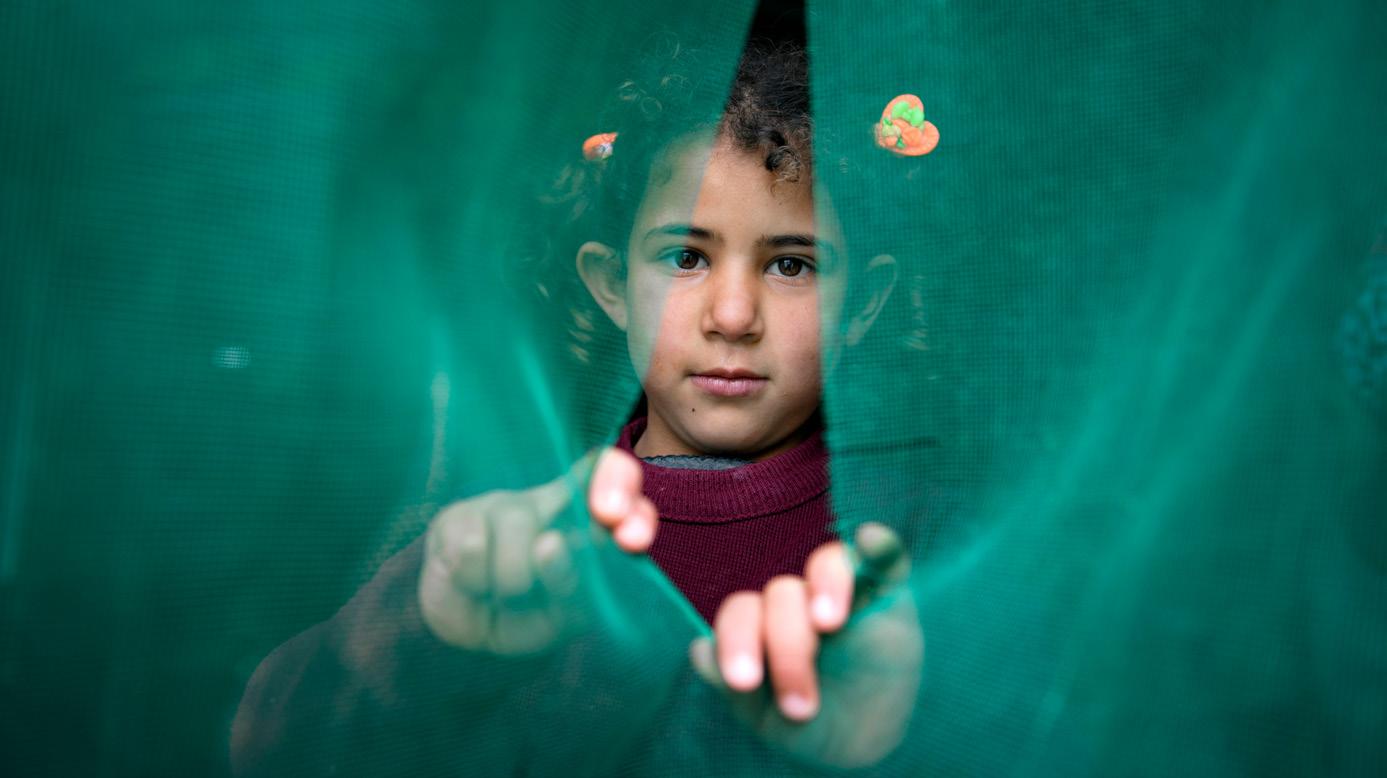
3 minute read
WOMEN IN FORCED DISPLACEMENT
People are forced to leave their homes and seek protection due to conflict, human rights violations, natural disasters, and other crises in record numbers.
89.3
Advertisement
MILLION
100
MILLION
83%
53.2
MILLION
As of 2021, the number of people living in forced displacement close to doubled from 45 million to 89.3 million in the last nine years.8
By mid-2022, the United Nations High Commissioner for Refugees (UNHCR) estimated that more than 100 million people were living in forced displacement, a number exacerbated by the Ukraine crisis.
Notably, 83 percent of the world’s refugees live in low- and middle-income countries where host communities grapple with development challenges.
Of the people forcibly displaced in 2021, approximately 53.2 million were internally displaced, and 27.1 million sought refugee protection outside their country.9
It is anticipated that the number of people living in forced displacement will continue to increase, and the scale of global displacement will grow as incidents of violence and conflict, climate change, natural disasters, extreme poverty, and other factors continue to drive more people to seek safety and security, often for protracted periods. Crises are becoming more common and protracted, and the impact is not only on the lives of people who are forcibly displaced but also on the countries and communities that host them. FORCED DISPLACEMENT
Forced displacement is defined as the involuntary movement of people who are “forced or obliged to flee or to leave their homes or places of habitual residence, in particular as a result of or in order to avoid the effects of armed conflict, situations of generalized violence, violations of human rights or natural or human-made disasters.”5
The term FDPs encompasses stateless persons, people who are likely in need of protection but have not applied for asylum, asylum seekers, refugees, returnees, and IDPs. However, as underlined in AFI’s Guideline Note on Integrating FDPs into National Financial Inclusion Strategies, “the definitions related to forced displacement are continually discussed and contested by the international community.”6
For example, there is also a need to address those who have been forcibly displaced by phenomena such as climate-induced disaster events. Financial policymakers and regulators are encouraged to be cautious in defining an FDP in their jurisdiction and related national legal frameworks to prevent their unintentional exclusion when formulating and implementing financial inclusion policies and regulations.7
Special report:
Integrating Forcibly Displaced Persons (FDPs) into National Financial Inclusion Strategies (NFIS)
> View here
5 IOM, 2019, International Migration Law, Glossary on Migration, https:// publications.iom.int/system/files/pdf/iml_34_glossary.pdf. 6 AFI, December 2020, Guideline Note on Integrating Forcibly Displaced
Persons into National Financial Inclusion Strategies: https://www.afiglobal.org/wp-content/uploads/2021/01/AFI_GN41_AW_digital.pdf. 7 Ibid. 8 UNHCR, June 2022, Global Trends in Forced Displacement, https:// www.unhcr.org/62a9d1494/global-trends-report-2021 9 Ibid.
48%
54%
Women and girls accounted for 48 percent of individuals living in forced displacement across borders in 2021.
West and Central Africa host a higher proportion of refugee women and girls than any other region, at 54 percent of the refugee population.10
Despite the large numbers of forcibly displaced women and girls, the unique ways they experience displacement and the specific challenges they face are insufficiently explored by most existing research. Although in recent years, more efforts have been made to collect sex- and age- disaggregated data about the experiences of people affected by forced displacement, more comprehensive endeavors should be made to ensure quality analysis is generated that will inform policies, strategies, and programs to better support women and girls affected by forced displacement. Evidence indicates that displacement disproportionately affects women due to a confluence of interlinked factors, including higher risks of gender-based violence, economic marginalization, and discriminatory norms.11 Forcibly displaced women face intersecting barriers that drive or are consequences of gender inequality. Displacement often reinforces harmful gender norms replicating structural disadvantages, including socioeconomic challenges and financial exclusion.12 SEX-DISAGGREGATED DATA VS. GENDERDISAGGREGATED DATA
Sex-disaggregated data breaks down information according to a person’s sex or the biological and physiological differences between males and females. Gender-disaggregated data allows for the measurement of differences between women and men on various social, cultural, and economic dimensions.
FIGURE 1: PERCENTAGE OF WOMEN AND GILRS LIVING IN FORCED DISPLACEMENT COMPARED TO MEN AND BOYS
48
52 Women and girls Men and boys
10 UNHCR, June 2022, Global Trends in Forced Displacement, https:// www.unhcr.org/62a9d1494/global-trends-report-2021. 11 IDMC, IMPACT, PLAN, March 2020, Hidden in Plain Sight: Women and Girls in Internal Displacement. 12 Ibid.








